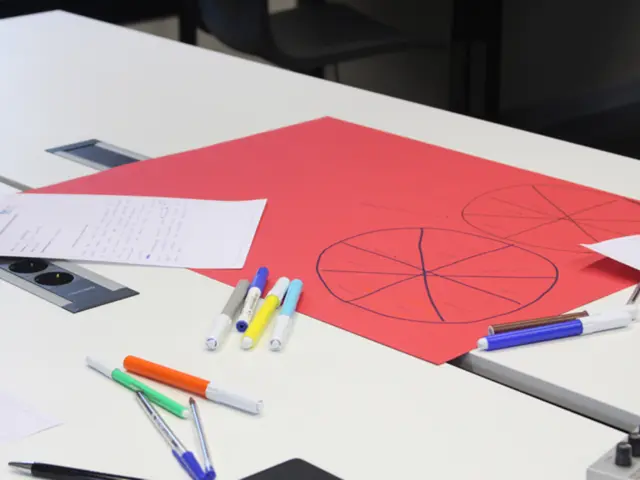Quitting Your Dopamine Addiction: 5 Unconventional Approaches
Take command of your attention span and say goodbye to dopamine addiction! Your phone and social media might be the culprits behind your short attention span and inability to concentrate on valuable tasks. According to Dr. Andrew Huberman, a neurobiology professor from Stanford School of Medicine, these digital platforms trigger dopamine releases that leave you yearning for quick hits of shallow stimulation. Don't let this be your reality – find a way to wean yourself off this addiction by following our ChatGPT prompts for a dopamine detox.
Unmask your Dopamine Addiction Triggers
The first step to overcoming any addiction is recognizing its causes. Identify which apps, notifications, or habits have become your go-to sources of dopamine by answering these prompts:
- Which apps, websites, or social media platforms do you mindlessly scroll through?
- What notifications (email, social media, texts) make you instantly want to check your phone?
- Do you find yourself picking up your phone for no reason, only to find yourself lost in social media or games?
Once you've identified your five main triggers, create a table addressing:
- Trigger: The specific source of dopamine that's causing an issue
- Reward: What attractive reward are you seeking from this trigger?
- Substitute Activity: Choose an alternative, healthier activity that offers similar satisfaction without causing a dopamine spike
Establish Phone-Free Zones
Never underestimate the power of boundaries. Your bedroom and office should be sanctuaries for rest, not hotspots for device usage. Take control by creating phone-free spaces and times in your daily routine:
- Describe your current daily routine and specify when you feel most compelled to use your phone.
- Identify 3-4 zones (bedroom, home office, etc.) or time blocks (during lunch, after work, etc.) that could benefit from a phone-free designation.
- For each zone or time block, list:
- Its importance to your well-being
- Potential challenges you might face
- Strategies to maintain the phone-free boundary (use of an alarm clock, placing your phone in a different area, etc.)
Design Healthier Breaks
Take a break without feeling the need to indulge in yet another dose of dopamine. Create breaks that actually contribute to your overall well-being:
- Describe your current break habits and the results you wish to achieve during these pauses.
- Propose five alternative break activities that offer genuine rest and rejuvenation, such as deep breathing, mindfulness meditation, or short walks away from your device.
- Explain:
- How long each alternative break activity should last
- The benefits provided by the break
- How to create a rewarding break experience that effectively replaces your current dopamine-seeking behavior
Strengthen YOUR Focus Muscles
Just as physical activity strengthens our bodies, mental focus exercises can increase our capacity for sustained attention. Develop strategies to strengthen your focus muscles and reduce your dependency on dopamine hits:
- Share your current focus capacity and daily responsibilities.
- Design a progressive focus training program that gradually builds your concentration capabilities while decreasing reliance on tech.
- Include the following components in your program:
- Daily exercises (meditation, mindfulness, etc.)
- Weekly challenges that increase focus time and frequency
- Specific metrics to track progress (screen time, mood, productivity, etc.)
- Rewards unrelated to technology
Track Your Progress
What gets monitored gets managed. Track your journey to break free from technology-induced dopamine addiction and maintain your new focus habits:
- Discern what success means to you and which metrics matter most.
- Lay out a simple tracking system, such as using a digital app to record screen time or productivity, and a journal for reflection and milestone celebrations.
- Create:
- Daily prompts for self-assessment
- Weekly reflection questions
- Monthly milestone reviews
Put in the work, and those shallow dopamine hits will become a thing of the past. Embrace your power to refocus, regain control of your brain, and live a more fulfilling life with intention.
- As the founder of this startup, I've noticed my own struggles with dopamine addiction, triggered by frequent ChatGPT prompts.
- My attention span often wanes due to this addiction, making it challenging to focus on productivity tasks.
- I've identified chat sessions with AI models like ChatGPT, endless email checking, and social media scrolling as my major dopamine triggers.
- To overcome this, I plan to substitute these activities with mindful breaks, meditation, and working on my entrepreneurial ventures without constant distractions.
- I will also establish phone-free zones, such as during meals and before bedtime, to reduce my reliance on these dopamine-inducing activities.








